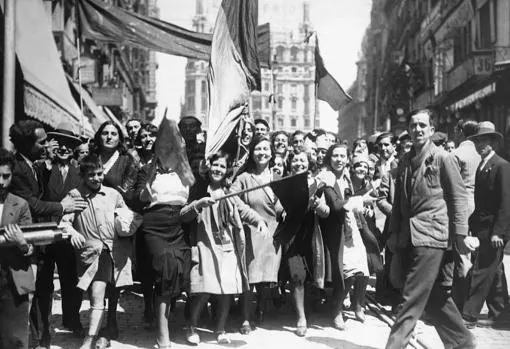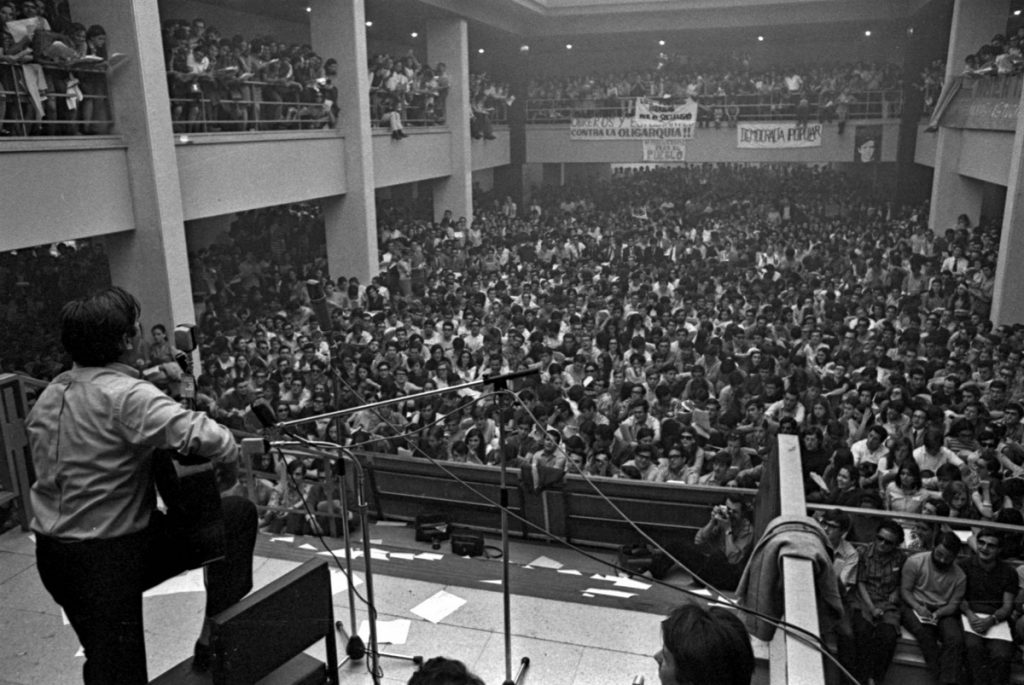The Federal Republic of Lusitania and Vettonia
-
Main Information
Capital City: Augusta Emérita
Official Lenguages: Spanish and Portuguese (Latin is still used in some documents)
Government: Democratic Federal Republic
President of the Republic: Augusto Dominguez Moreno
Governor-General: José Miguel Orato Gonzo
Governing Party: Unión Conservadora Democrática (UCD) Conservative Democratic Union
Legislature: Bicameral- Senate: Upper house
- General Diet: Lower house
Currency: Denary
Population: 8,350,000Religion and more facts
Religion
Christianity (70%)
Islam (12%)
Others (6%)
Non religious (12%)More facts
Date format: YYYY/DD/MM
Calling Code: +14
Drivers on the: Right
Internet Code: .luv
Time zone:
Central European Time (CET) (UTC+1)
Central European Summer Time (CEST) (UTC+2)National Flag and Coat of Arms

National Flag
National Coat of ArmsPolitical Organization and Maps
The state is divided in two republics with their respective governments: Lusitania and Vettonia. Both republics have four provinces.

Lusitania
Capital Citiv: Ossonoba
Other Cities:
Augusta Emérita (without competencies of the Lusitanian Government, under Federal Gorvenment control)
Évora
PacisVettonia
Capital City; Olissipo
Other Cities:
Portus Cale
Capera
Salamantica -
Corrections
Population: 86,000Culture in Lusitania and Vettonia
Patron: Hugh of Châteauneuf
Festivities (without the states festivities, also not students hollydays):
January 1st: New Year
January 6th: Epiphany
February 17th: Constitution Day
April 1st: Saint Hugh of Châteauneuf
May 1st: Labour Day
September 29th: Independence Day
November 1st: All Saints's Day
December 24th: Christmas Eve
December 25th: Christmas
December 31st: New Years EveAugusta Emérita

Augusta Emérita views in a summer night
Bilingual sign at the entrance of the country -
Sports in Lusitania and Vettonia
Lusitania and Vettonia is not at the moment an sports power. The most popular sports are Football, Basketball and Motorsport. The main competitions in football are the National Supreme League, the Lusitanian League and the Vettonian League. The main teams are the "Federación Deportiva Augusta", the "Club Atlético Salamantica" and the "Futebol Clube de Olissipo"

Lusitania and Vettonia National Stadaium, where the National Selection playsLusitania and Vettonia National Selection
The country is represented by the National Selection. Is a team with the best football players of the country.

Motorsport
In the country is very popular the motorsport world. There are lots of competitions of karts, cars and motorbikes. Is very famous the Formula Light, a formula competition organized by the Lusitanian and Vettonian Automobile Federation, is similar to Formula 1 but the cars are shorter and narrower, the teams are car manufacturers and local businesses. The actual champion is Hugo Ferreira. Although there is a circuit in almost every city, the best is the Portus Cale Street Circuit.

Portus Cale Street Circuit -
Lusitania and Vettonia History - VOL 1
From the native tribes to de Middle AgeToday's national territory was inhabited for a long time by the Neathic tribes. These tribes warred for a long period of time with each other, until in 534 BC a group of Neathics created the Kingdom of Neatia, which was the first to make its way out of the Come Sea and up the Hareti River to its mouth. This was to produce an important cultural exchange with central Europe.
The cultural exchange led to the arrival of an emigrant group: the Lusitas, who are believed to have reached the coast of Neatia in 471 BC. The Lusitas spoke Latin, a common language in the area of Europe. This group was well positioned in the court of King Aldman III because of their culture and knowledge.
The Lusitas, however, were gaining power. They introduced new building styles to the area, more similar to those already found in much of Europe. They began to form a population group that was more cultured and more advanced than the original population. And that did not please several generations of kings. The monarch Velladel I expelled them from the city of Seapia, now Olissipo. And they founded a city right next door: Leania. Leania gained de facto a lot of independence from Neatia.
But the Neathics could not consent to have a city that was in direct competition with them within their territory. In 321 BC a mob attacked Leania, causing the Lusitas to elect Gaelius Martius abandoned Leania after it was razed to the ground, and fled to the present-day Marcia Mountains. From there he began a war against the Neatians that lasted fifteen years. The Lusitas won the war, and were able to found the city of Salamantica as the seat of their own state, which, according to their customs, they organised as a republic.
The Republic of Salamantica coexisted with the Kingdom of Neatia for a century and a half. Until 156 BC when the consul Plicus Strarius attacked for an outlet to the sea. A series of four wars began, ending in 43 BC, when Seapia was razed to the ground by Salamantica. The Neathics were enslaved and subjugated to republican authority. But as rivalry began to grow between the Salamantic factions, in 17 BC a general, Marcus Aemilius, succeeded in gaining power in the state and proclaiming himself Emperor. A new regime began in the area of the Sea of Come.

The Empire in the 142 ADAemilius and his first successors fought against the last natives of the sea. And Emperor Augustus founded a new capital, Emerita Augusta, in 56 AD. The Emeritan Empire managed to dominate the whole area between the sea and the desert for 500 uninterrupted years. Until the crisis of the 5th century, two opposing groups formed at the court: the Lusitanians, led by Aersenius Pratius, and the Vettonians, led by Fabius Iesus. In 491 there was a plot and Augustus IV, the last emperor of Emerita, was assassinated. The Lusitanians accused the Vettonians of the assassination and a civil war began, which eventually disintegrated the Empire into three kingdoms: Lusitania, Vettonia and Salamantica. This marked the beginning of the Middle Ages in the Sea of Come.
-
Lusitania and Vettonia History - VOL 2
From the Middle Ages to NowdaysThe Middle Ages marked the end of Latin culture as such. Lusitania, Vettonia and Salamantica evolved in separate ways. At this time the Rumian culture of the desert was born. They formed a fourth kingdom on today's territory. The area of the Sea of Come was an area of conflict for a thousand years. In 1123 Salamantica fell to the Rumi. And the first Imperial Coalition took place. A union of Lusitania and Vettonia in the form of a military alliance against them.
The result of these coalitions were eight wars, which gradually tipped the balance in favour of the Catholic powers. The kings Nicholas I of Lusitania and Afonso IV of Vettonia defeated the Rumies at the Battle of the Amagirras (1561), and Lusitania and Vettonia spread northwards, founding cities such as Capera and Evora.
After the defeat of the common enemy, the rivalry between the two kingdoms was rekindled. The turning point came in 1743, when Vettonia invaded Lusitania in the Lusitanian-Vettonian War. This war began with victory for the men of Nuno VII, but they were defeated at the Siege of Emerita and began to lose ground. Finally in 1779 the Lusitanians conquered Olissipo, and Ferdinand III became King of Lusitania and Vettonia.
The kings of Lusitania and Vettonia were in this order:
-Fernando I (III) (1779-1786).
-Carlos I: (1786-1825) Who had to face a large-scale Vettonian insurrection in 1810. Built the Palais de la Marine
-Hugo I: (1825-1854) He had strong disagreements with the liberals. He suffered the 1st Liberal War against the forces of Pedro Casanova. He won and absolutism was maintained for several more years.
-Carlos II: (1854-1881) The only peaceful reign in common history, he is considered by far the best king to have existed in Lusitania and Vettonia. He surrounded himself with advisors from both crowns and legalised Portuguese as an official language for the first time. He granted a Carta Otorgada with rights and obligations for the citizens, but he was absolutist.
-Manuel I: (1881-1893) He is considered a very fragile king. During his mandate, Commander Jesús Paracio promoted a military pronunciamiento that led to the II Liberal War (1883-1887). The King's forces lost, and he had to sign the Constitution of 1887. He was assassinated in 1893.
-Hugo II (1893-1900) He ascended to the throne when he was 6 years old under the regency of General Gravão, the first Vettonio to have full power since the union. His reign was brief and convulsive, due to problems with the Liberal Movement and the Workers' Movement. He never governed effectively, on April 23rd, 1900, a command of the Royal Army surrounded the Palace under the command of the Republican Colonel Alfredo Cano. The tyranny exercised by Gravão took its toll on the crown, the King was forced to abdicate and the 1st Republic of Lusitania and Vettonia was proclaimed.
One denary of Hugo IIBut democracy only lasted from 1900 to 1925, the fragility of the Republican system caused Martin Dintero to stage a new coup d'état against a very unpopular government. He installed a fascist regime that lasted from 1925 to 1957, his main ideals were family, religion and nationalism. The regime ended abruptly with his own assassination in 1957. After his death a military junta was in charge of preserving the dictatorship for six years, years in which they fought against the labor movement. In 1963, the June Revolution expelled the military from power and established the II Republic of Lusitania and Vettonia. Hernando Trillo was the President of the Republic, but the communists won the 1964 elections and proclaimed the People's Republic, purged the military commanders and began their dictatorship under the leadership of Julio Ortíz Macaobado.

The People's Republic fell in 1973, during student protests. The students became the regime's most serious problem. And it was a law student, Lucas Salor Vega, who as a form of protest used the constitution to proclaim himself Interim President of the People's Republic in a performance at the Universidad Obrera. Surprisingly, the university students took it seriously, started a Student Strike in which they raised the National Flag (used from the kings to the People's Republic), and confronted the Proletariat Police in heavy police charges, which the only thing they achieved was that the students got hold of some firearms.
The protest spread to the universities, and the streets were filled with barricades. The Macaobado government proclaimed Martial Law. But the military, still upset by the recent purges, refused to support it. The General Jacaio went to the University, besieged by his men, and presented arms in front of Lucas Salor. Then, in a peaceful march known as the Paper Revolution, the military deposed the People's Republic and hailed the III Republic of Lusitania and Vettonia. Lucas Salor went out to the balcony to proclaim it, and announced that it would be Federal.

Protest in the University at the begining of the revolutionThe 1974 elections gave victory to the Student Front, against the traditional Conservatives and Social Democrats. The first government of Lucas Salor approved the 1974 Constitution, which stated that the official name of the state was "Federal Republic of Lusitania and Vettonia". This government fought for equality among the federated states, stabilized the country and finally called elections, which it did not run for. The victory went to the Social Democratic Party.
Heads of State of Lusitania and Vettonia
Monarchy
Kings of Lusitania and Vettonia
-Fernando I
-Hugo I
-Charles I
-Charles II
-Manuel I
-Hugo III Republic
Presidents of the Republic
-Alfredo Cano (1900-1904)
-Luis Mendoza (1904-1912)
-Miguel Douro (1912-1916)
-García Muñoz (1916-1924)
-Victor Peres (1924-1925)Dictatorship
Head of State of Lusitania and Vettonia
-Martín Dintero (1925-1957)
Head of the Military Junta
-Felipe Garona (1957-1959)
-Santiago Tracer (1959-1963)II Republic
Presidents of the Republic
-Hernando Trillo (1963-1964)Popular Republic
Comrade President
-Julio Ortiz Macaobado (1964-1973)Federal Republic
Presidents of the Republic
-Lucas Salor (1973-1980)
-Ignacio Games (1980-1986)
-Rui Seila (1986-1992)
-Vitor Manes (1992-1998)
-Rui Seila (1998-2004)
-Hugo Gómez (2004-2010)
-Hugo Gómez (2010-2016)
-Augusto Domínguez (2016-2022)